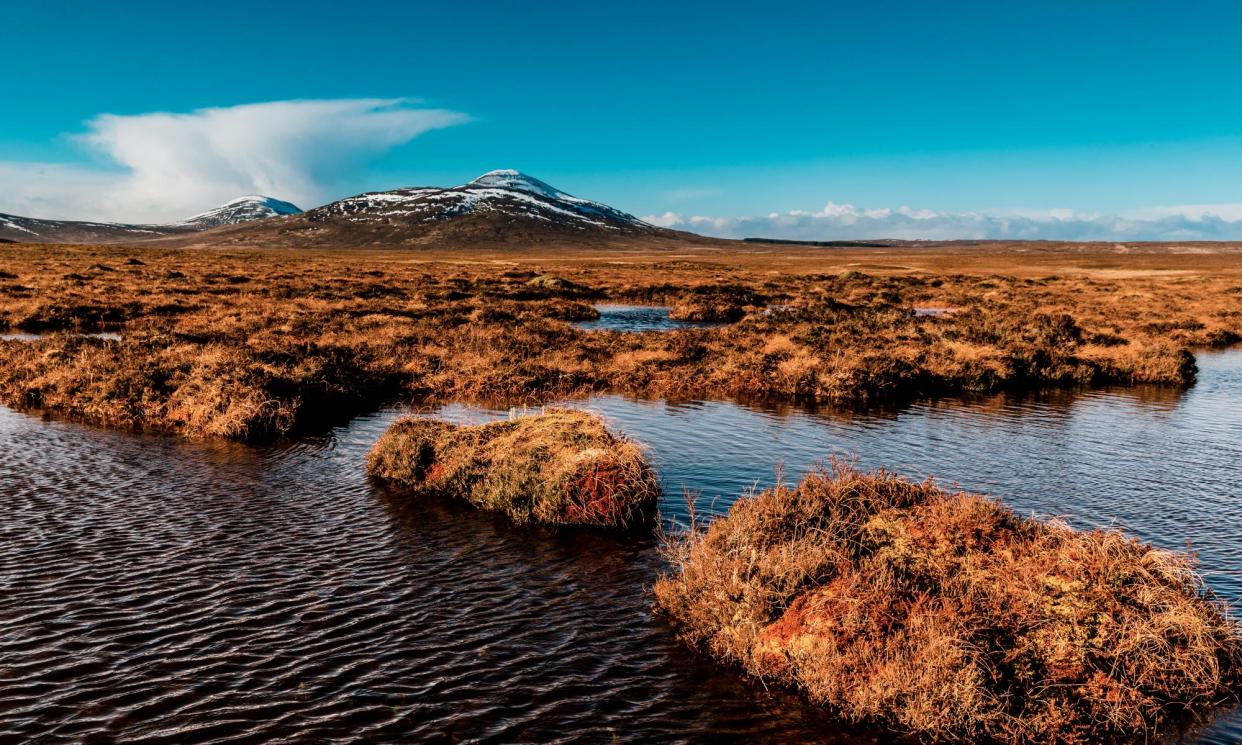Scotland’s remote land of bogs and bugs in line for world heritage status

It is a land of mire, mist and midges that could soon be awarded a special status among the planet’s wild habitats. In a few weeks, Unesco is set to announce its decision on an application to allow the Flow Country in north Scotland to become a world heritage site.
Such a designation is only given to places of special cultural, historical or scientific significance and would put this remote region of perpetual dampness on the same standing as the Great Barrier Reef, the Grand Canyon and the Pyramids.
The Flow Country straddles Caithness and Sutherland in the most northerly part of the British Isles and is the largest area of blanket bog in the world. Covering 4,000 sq km, it is also home to a remarkable range of wildlife that includes the black-throated diver, golden plover, greenshank, golden eagle, merlin and short-eared owl, as well as otters and water voles.
The land is carpeted with sphagnum moss that covers layers of peat that can reach down to depths of 10 metres, enough to bury a double decker bus, while the local plant life includes sundews, which use their sticky tentacles to feed on insects.
It is a remarkable habitat which was the subject of a formal request made last year by a partnership including the RSPB, NatureScot and the Highland Council to have the bogs, pools, lochs and hills of the Flow Country designated a world heritage site, a place of outstanding international importance that deserves special protection. Unesco has said that, after more than a year’s deliberation, it is ready to give its formal decision on the application in the next few weeks.
“There are many other, larger areas of peatland in the world – in Siberia, for example – but blanket bog is special,” said Roxane Anderson, professor of peatland science at the University of the Highlands and Islands, which is also involved in the Unesco bid. “Blanket bog can cover very steep slopes, unlike other types of peatland, and can envelop the landscape in a very complex mosaic. It is also very thick, not so much a blanket as a quilt that coats the entire terrain.”
As to the factors that sustain blanket bog, Anderson is clear. “It’s the rain and the fog. If you have peat and the weather gets warm and dry, it will dry, crack and fall away in steep areas. But in the Flow Country it never gets dry or hot, so the bog here remains intact, even on sharp inclines.”
The blanket bogs of Caithness and Sutherland have been growing for an astonishingly long time, since the last glaciers retreated from the north of Scotland more than 10,000 years ago. Over this time, they have played a critical role in storing carbon. The Flow Country covers a total of almost one million acres of land and stores more than 400m tonnes of carbon in its blanket bog, scientists have calculated. However, there is a downside to this mix of peatland and peace: midges. The Flow Country is rated as one of the worst places in Scotland for that eternal curse of Caledonia, Culicoides impunctatus. Midges appear as maddening clouds of biting bugs that will attack humans, livestock and pets and they thrive in the region’s boggy, acidic ground which provides a perfect environment for breeding.
The region is also remarkable because it provides an extensive area of wild land and solitude on the otherwise highly developed and densely populated British islands. This desolation was enhanced during the clearances of the 18th and 19th centuries, when many Highlanders were forcibly evicted from their homes in the wake of the failed uprising by the Jacobites. Vast tracts of the north of Scotland were depopulated as a result.
Just what the Flow Country will gain if it is made a world heritage site remains to be seen, however. “At present, tourists take the North Coast 500 route, a 500-mile circuit of roads that loop round the north of Scotland completely skirting the Flow Country,” said Frances Gunn, chair of the Flow Country World Heritage Project steering group. “We hope that, in future, if they see signs telling them they are passing a world heritage site, they might take a detour and visit us.”
A key site to appreciate the wonders of the Flow Country is the RSPB reserve at Forsinard which covers more than 21,000 hectares and provides sights of golden plover, dunlin, greenshank, hen harrier, skylark and meadow pipit. “It provides a perfect view of the glories of the Flow Country,” said the RSPB’s Milly Revill Hayward.
Gunn, who has lived in the area all her life, recalls the onset of summer when she was young. Families would set off to cut peat from land at the edge of the main part of the Flow Country. “It was a great social occasion that could last a long time, depending on the weather. For us, peat was a key source of energy. Today, we now realise that peat helps provide us with protection against climate change.”
From her house, Gunn has a clear view of the peatlands of the Flow Country, while from the other side of her home, in Tongue, she can witness the creation of another remarkable local project: the Sutherland Space Port which is being constructed on the nearby A’ Mhòine peninsula. In the near future, rockets fired northwards from the port, over the open seas, will carry satellites into orbits that will sweep over the poles and allow them to monitor the Earth below.
“It’s a neat juxtaposition,” said Gunn. “On one side, we will be working to protect the past in our neighbourhood and preserve the Flow Country. On the other, we will be launching space probes that will allow us to survey the state of the environment in every other part of the globe.”

 Yahoo News
Yahoo News 
